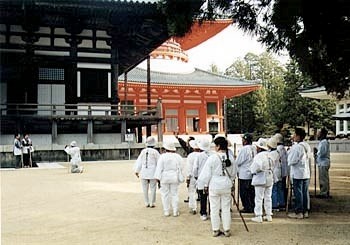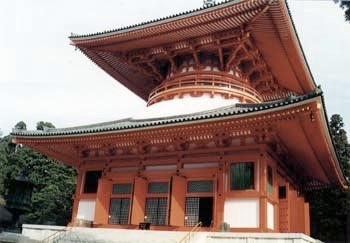

































Here is a better view of the pagoda. It's not that old, rebuilt in 1937 like so many of the structures here (due to chronic fires)... but it's a rare one in Japan since it resembles the Indian design more than the Japanese ones that have three or five stories. The tower is located in one of Koya's two main areas, the Garan or temple area. The other main area in Koya-san is the Okuno-in cemetery area.
The next morning, I was well rested - since I'd been lazy and hadn't gotten up at 5 a.m. for a traditional Buddhist prayer service (there was none at the hostel, and anyway I'd done it several times before), So it was time to do some exploring. First stop was the Kongobuji temple, the major one in Koya-san: built in Hideyoshi's time, destroyed by fire, and since rebuilt. Most eyes will go to the dramatic pagoda nearby - called Daito, or great tower. The pilgrims on this tour were dressed all in traditional white; I was in traditional cycle gear.